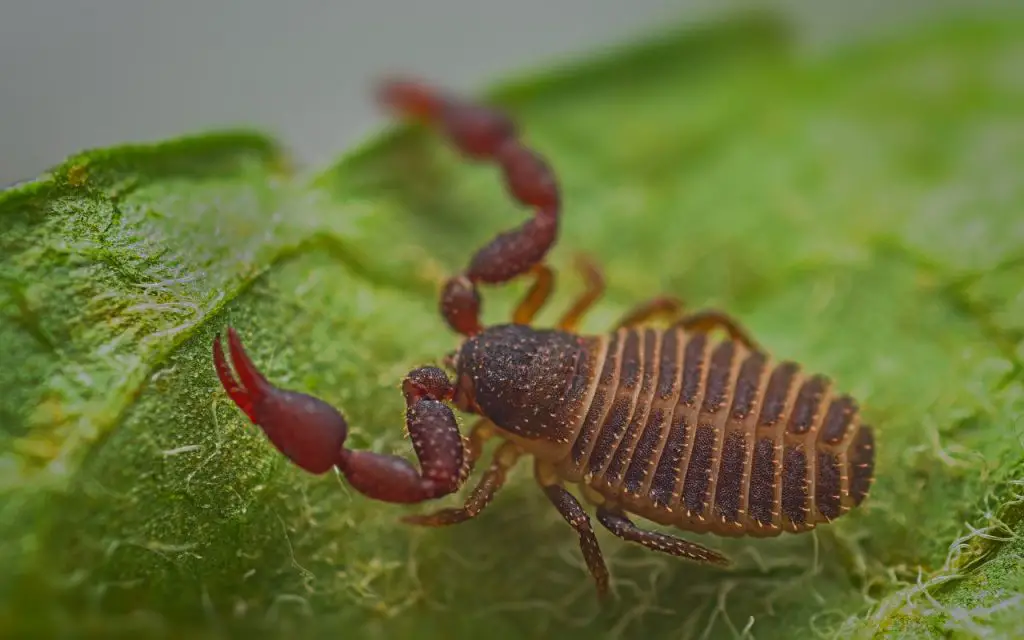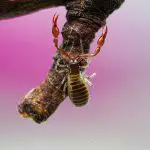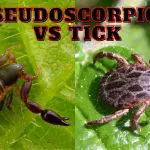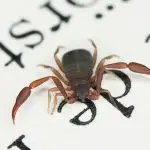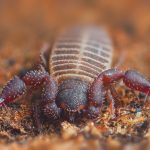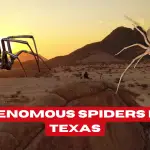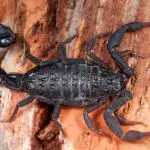Last updated on February 17th, 2023 at 09:00 am
It might surprise you to learn that there are indeed Pseudoscorpions in Washington State. Washington is very far north, but it has a mostly temperate climate…
A pseudoscorpion is a type of arachnid found in many environments globally. In the United States, they are found in, temperate, oceanic, and arid regions, such as Washington State. These creatures have a long, thin, fusiform (cone-like) body, a broad, flattened head, and a pair of long, narrow, tapering pedipalps.
Are there Scorpions in Western Washington?
Scorpions are an uncommon sight in Western Washington, but they do exist. The most common scorpion species in Western Washington is the Paruroctonus boreus, known as the Northern Scorpion. While this species can reside in various habitats, it prefers semi-arid or desert environments.
The Pacific Forest Scorpion is another common species in Washington State. It is native to humid, forrested and coastal areas and can reach a size of two inches. The species generally shy and unagressive, meaning you don’t encounter it often even if it does live in your area.
Now, if you live in Washington State and find something that looks like a scorpion – but has no tail – you’ve found a Pseudoscorpion. This is something different altogether. Just take a look at the table below:
| Characteristic | Scorpions | Pseudoscorpions |
|---|---|---|
| Size | 2.5 to 8 cm | 2 to 10 mm |
| Shape | Elongated and flat | Small and round |
| Telson (Tail) | Long, with a stinger | Short, without a stinger |
| Pincers | Large, prominent | Small and not as prominent |
| Venom | Usually present, used for defense and hunting | Rarely present, not harmful to humans |
| Diet | Mostly insects and other arthropods | Mostly mites, springtails and other small insects |
| Habitat | Mostly found in deserts and other arid areas, less often in forests | Found in a variety of habitats, including forests, grasslands and deserts |
| Behavior | Solitary and nocturnal | Sometimes social and mainly active during the day |
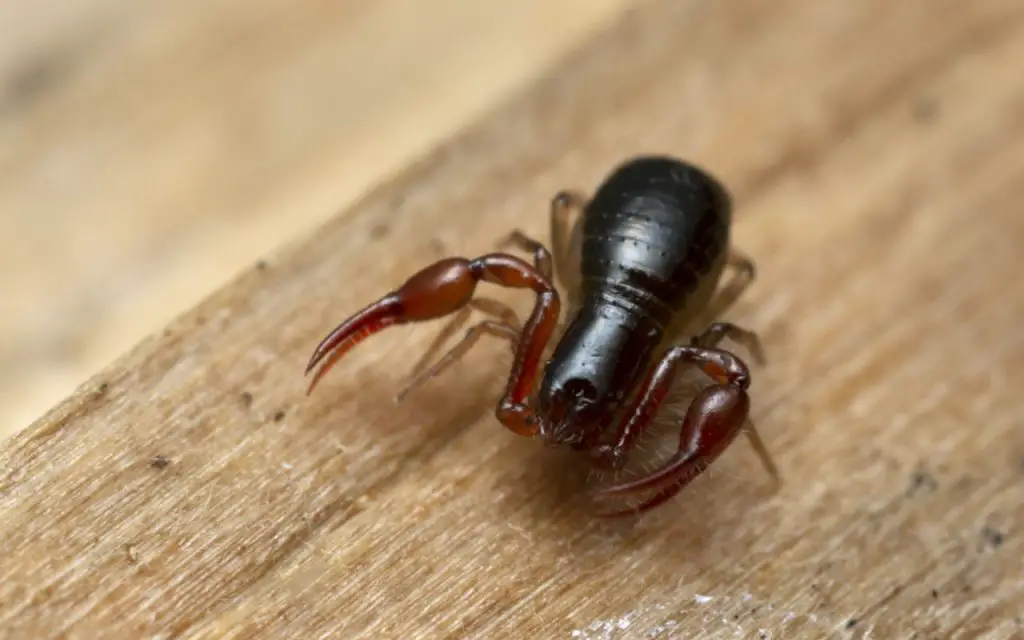
Why am I Finding Pseudoscorpions in my House?
Pseudoscorpions can find their way indoors through tiny openings, such as under doors, windows, and vents. Since they are hitchhikers, they may also enter homes with houseplants, firewood, or furniture and, most times, hop on other insects. They often live in dark and damp places such as bathrooms and crawl spaces and may feed on other insects and mites in these areas.
Once they get into your home, you may not notice them immediately due to their size and hiding tactics. You only start seeing them as they reproduce and increase in numbers since they appear in open places like sinks and bathtubs. However, their presence is no problem for any household member, including animals.
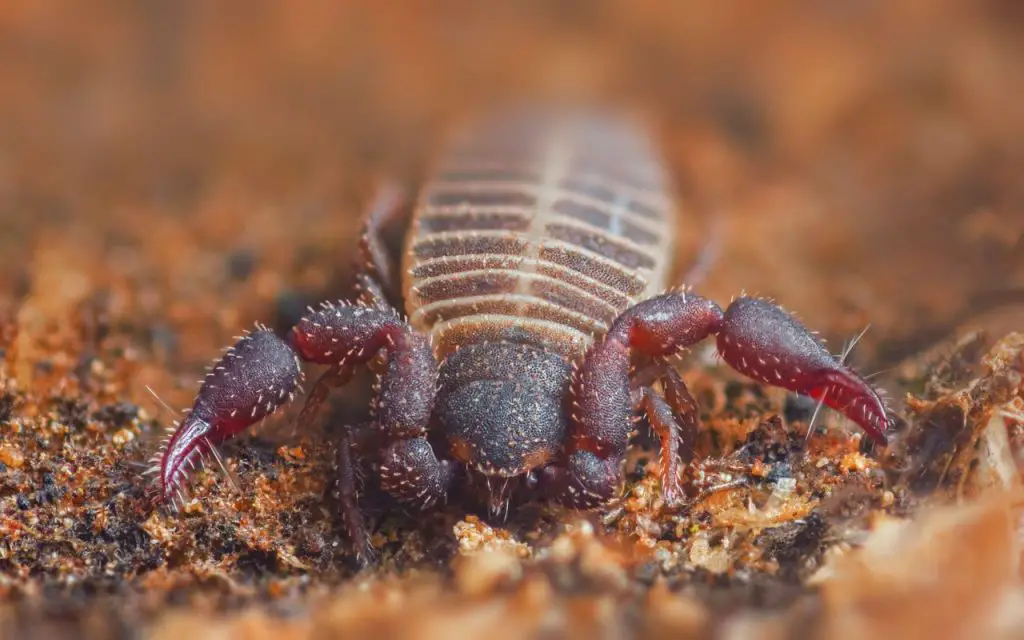
Scorpions in Washington State
Washington state is home to two scorpion species: the northern Scorpion (Paruroctonus boreus), and the Pacific Forest Scorpion (Uroctonus mordax)
1. Northern Scorpion (Paruroctonus boreus)
The Northern Scorpion is a species common in Washington State and other parts of the western United States. It is a medium-sized scorpion, reaching up to 2.5 inches in length, with a long stretched-out tail. It is a light tan or yellowish, with a yellow or white stripe down its back.
The Northern Scorpion is a nocturnal species that lives in dry, rocky areas. It feeds on insects, spiders, and other small invertebrates. It is not dangerous to humans but can deliver a painful sting if threatened.
It is only found east of the Cascades.
2. Pacific Forest Scorpion (Uroctonus mordax)
This scorpion is about as small and harmless as the Northern Scorpion, but likes very different habitat. In Washington State, it’s generally found in the Cascade foothills, and can tolerate both higher humidity and lower summer temperatures than the Northern Scorpion.
It’s also a differenet color, being brown or sometimes black.
Can a Pseudoscorpion Hurt You?
No, pseudoscorpions are harmless to humans and do not have venom. However, they may pinch in defense if you handle or disturb them.
On the contrary, these minute creatures benefit humans whenever they invade your home. They feed on a wide range of pest insects, including mites, thrips, and small flies, which helps keep pest populations down and reduce crop and property damage.
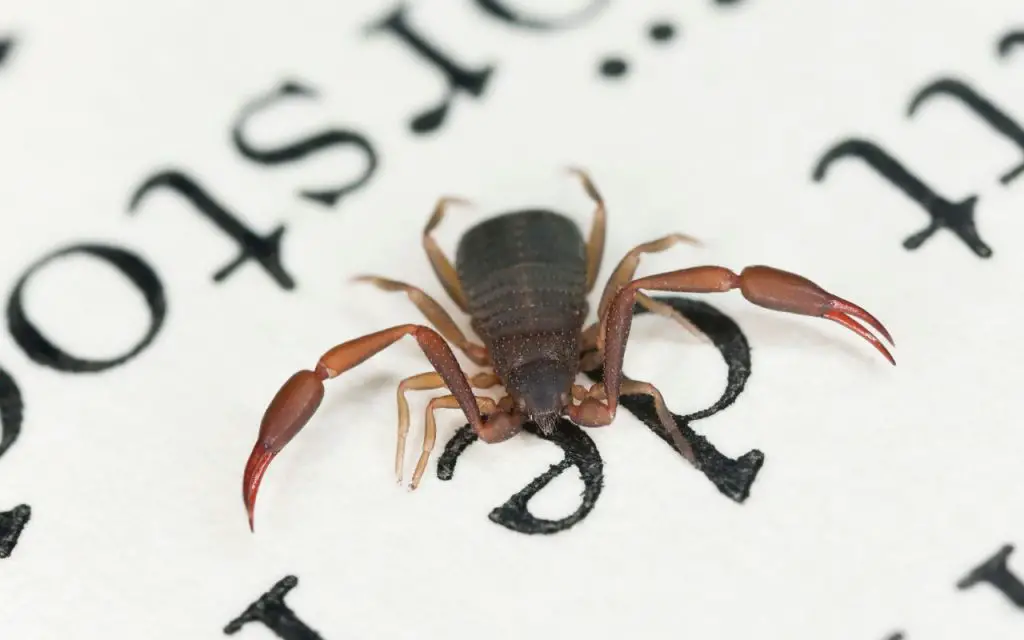
What States are Pseudoscorpions Found?
Pseudoscorpions are widespread in many states in the United States. Dracochela deprehendor, the oldest pseudoscorpion fossil, is found in New York City. Below are some states where you can find pseudoscorpion populations:
- Colorado
- Utah
- Idaho
- Montana
- Texas State
- Pennsylvania
- New York
- Connecticut
- New Hampshire
- Maine
- South Carolina
- North Carolina
- New Mexico
- Oklahoma
- Louisiana
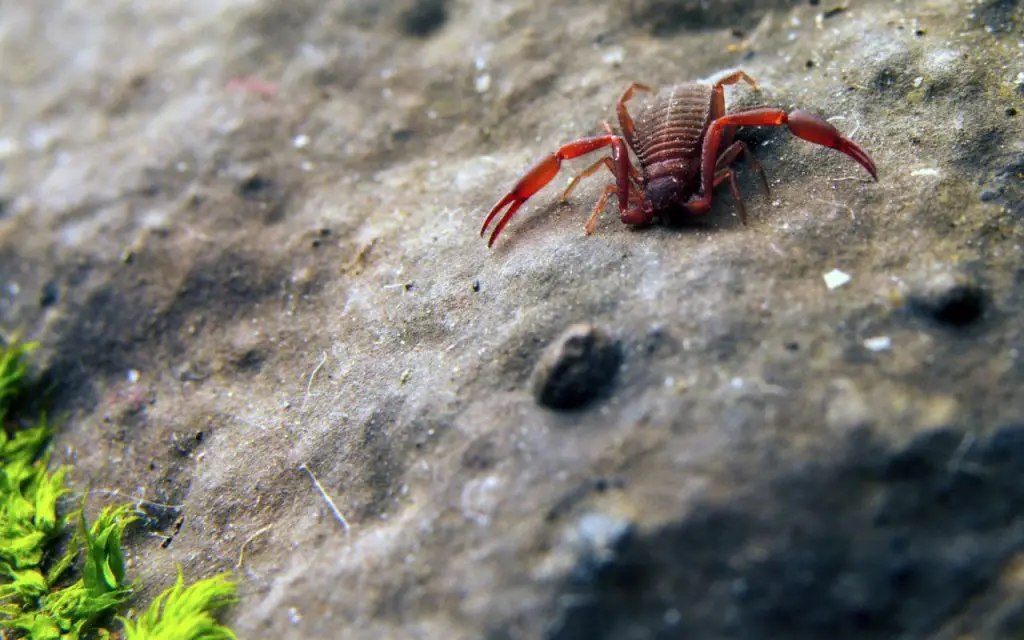
Scorpions in Eastern Washington State
The Northern Scorpion is the most dominant in eastern Washington State. A mature Paruroctonus boreus can be a bit shorter than two inches and brown and has a yellow tail. It can survive cooler climates better than many other scorpion species. The Scorpion’s striking tail contains venomous stingers that it injects into its prey after capturing it with the pincers.
Unlike it may appear with its stingers, this Scorpion is not dangerous to humans. It may sting in defense when provoked, but the sting is less life-threatening and less painful than a bee. It is not common to see these creatures during the day since they hide under rocks only to come out hunting at night. A northern scorpion feeds on insects such as beetles, stinkbugs, and grasshoppers.
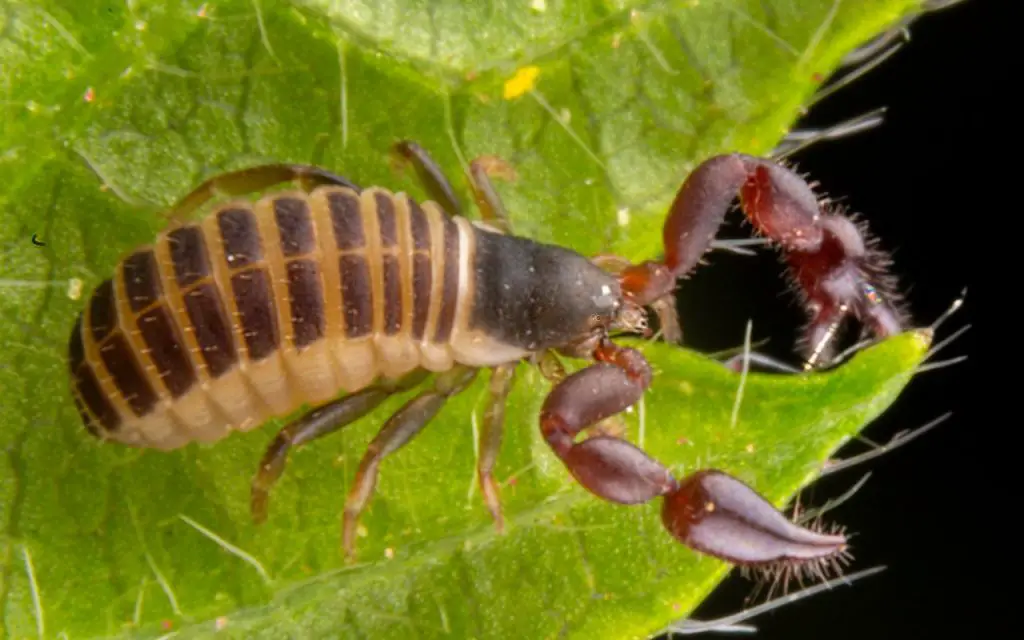
Is a Pseudoscorpion a Tick?
Although a pseudoscorpion may resemble a tick in shape and color, it differs in many ways. First, a pseudoscorpion is much smaller than a tick and less noticeable. In addition, unlike ticks which are sinister to humans and livestock, pseudoscorpions are harmless to people and their belongings.
Are Pseudoscorpions Rare?
No, pseudoscorpions are not rare. They are quite common and can be found in many different habitats worldwide. Nonetheless, it is easy to assume that they are rare since they are primarily unnoticeable due to their size, color, and hiding tactics.
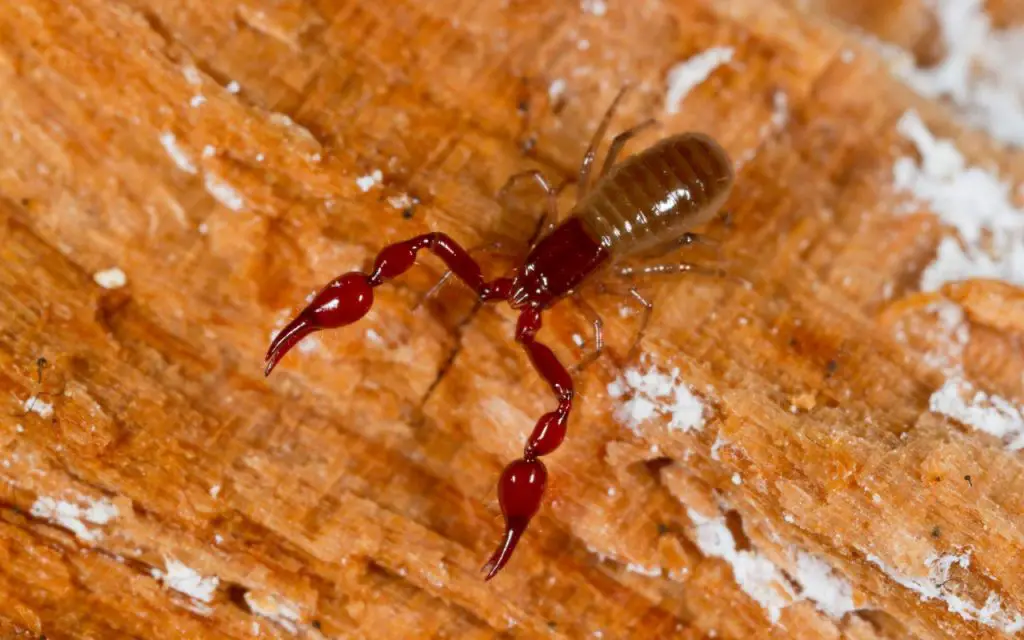
Washington State Bug
The Anax junius drury, commonly known as the common green darner dragonfly, is the official bug for Washington State. It is common across the entire state, and you can easily recognize it from its green thorax and head. It spends about one to five years of its early life underwater as larvae before maturity.
The darner dragonfly sheds its skin approximately ten to fifteen times before its final molting when it finally comes out of the water as an adult. It preys on flying insects such as mosquitoes, hence the name, mosquito hawk.
Washington State Mites
Mites are common in many parts of Washington State, with some living in the soil or trees. The most common species of mites include the clover mite, the grain mite, the dust mite, and the spider mite. Mites are tiny arthropods related to spiders, ticks, and scorpions. They feed on living and dead organisms and can cause damage to plants.
A Mites invasion can be a nuisance and menace in the home, especially in areas with high humidity. To prevent mite infestations, reduce humidity levels in the house and regularly vacuum carpets, furniture, and bedding. The best way to eradicate mites from your home after an infestation is by using pesticides.
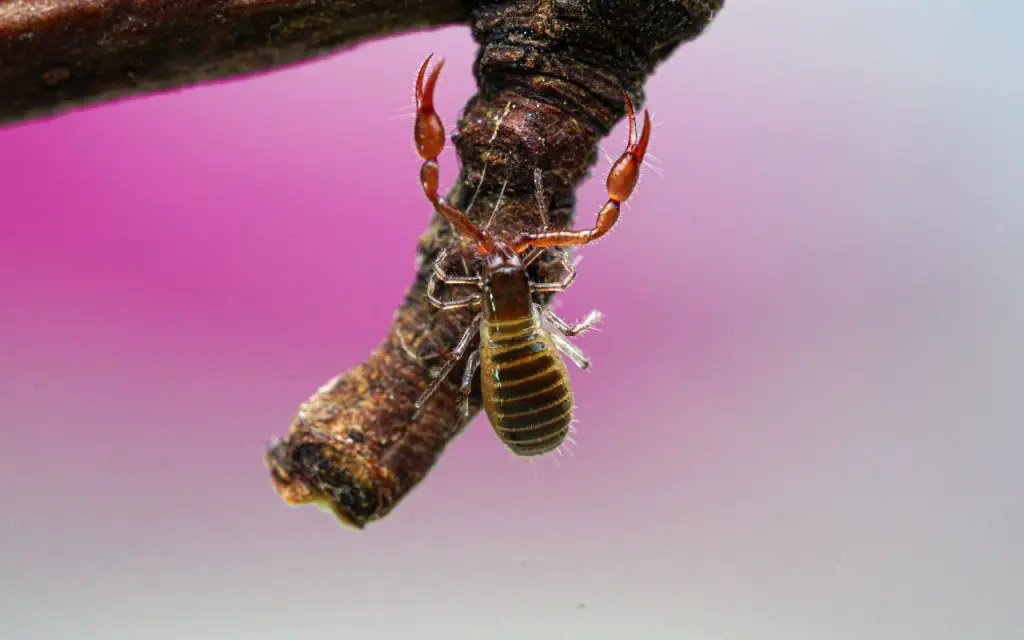
Vejovis Boreus (Girard’s Scorpion)
Vejovis boreus, commonly called the Girard’s Scorpion, is native to the United States. It is common in the southwestern United States, ranging from southern California to Arizona, Texas, and New Mexico. These scorpions have medium-sized bodies and a dark or yellowish-brown coloration.
The Girard can grow up to 2 inches in length within its lifespan of up to 10 years. They are a nocturnal species and feed primarily on insects and arthropods. The Vejovis boreus is venomous and can sting, but medical experts do not consider its venom medically significant.
Though commonly referrenced in the media, this species does not occur in Washington State.
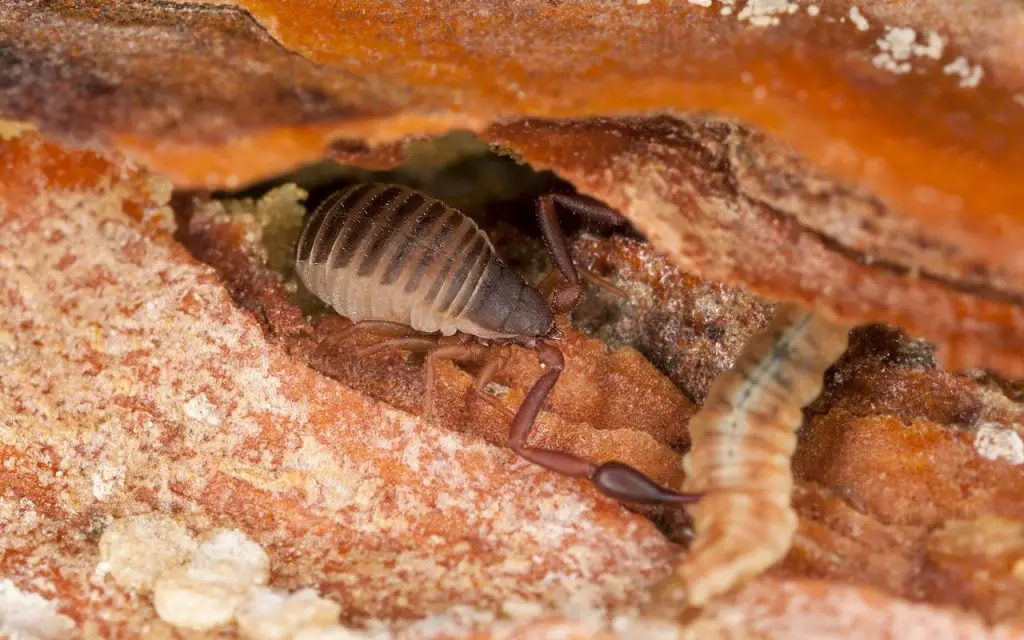
FAQ Relating to Pseudoscorpion Washington State
Are Pseudoscorpions Good?
Pseudoscorpions benefit humans, as they feed on tiny pests such as mites, aphids, and other tiny insects. That way, they protect you and your property from the damage their prey would cause. They are also natural and ideal for pest control in your home.
Do Pseudoscorpions Eat Bed Bugs?
Pseudoscorpions feed on various insects and tiny animals, including bed bugs. They hide between bed crevices and under the mattresses, attacking and eating bed bug nymphs (the babies).
Can Pseudoscorpions Fly?
Pseudoscorpions do not fly but instead move by hitchhiking. They hop onto the backs of other small animals or objects and get a free ride to their destinations.
Where in the World do Pseudoscorpions Live?
Pseudoscorpions can live in various parts of the world in diverse habitats, but they mostly prefer moist environments. You can find them outdoors under tree bark and farm waste. Furthermore, they can live indoors in damp places like bathrooms and basements. In many countries, you mostly find them near the coasts where the weather is mild.
Washington State is home to various scorpions and pseudoscorpions. Here are some facts about scorpions and pseudoscorpions in this state:
- Northern Scorpion is the most common species in eastern Washington
- Pseudoscorpions’ venom is harmless to humans
- Pseudoscorpions dominate many states in the United States

